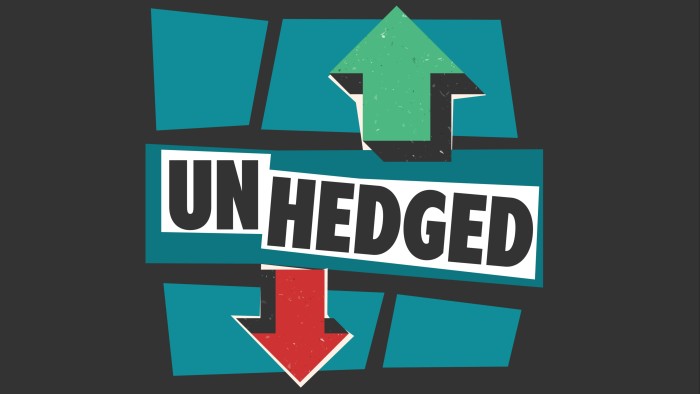Unlock the Editor’s Digest for free
Roula Khalaf, Editor of the FT, selects her favourite stories in this weekly newsletter.
This article is an on-site version of our Unhedged newsletter. Premium subscribers can sign up here to get the newsletter delivered every weekday. Standard subscribers can upgrade to Premium here, or explore all FT newsletters
Good morning. US stocks continued their multi-day rally yesterday, despite Beijing declaring trade negotiations would not begin until the US removed Donald Trump’s so-called “liberation day” tariffs. Hope is a hard thing to stamp out. Email us: robert.armstrong@ft.com and aiden.reiter@ft.com.
Markets since ‘liberation day’
Markets are back to where they were on April 3, the morning after President Donald Trump announced his “liberation day” tariffs. We may be back to where we started, but the ride has been brutal, with every market move driven by news coming out of the White House:

That looks like a rollercoaster, and it felt like one for investors. And every time markets fell, investors worried there was worse to come. The Vix index, which uses option prices to track the volatility that investors expect in the coming month, shot up every time markets fell. In this chart we have inverted the Vix so the correlation with the S&P 500 is visible:
With each stomach-churning decline, the market added to bets that the Federal Reserve would be forced to come to the rescue. This chart shows the S&P 500 against futures markets’ expectation for the federal funds rate at the end of 2025:
The scariest bit might have been the massive sell-off in the 30-year Treasury bond, visible at left below. It read as a signal that the long-term liabilities of the US were suddenly suspect. Long yields (which rise when prices fall) have stayed near their highs:
The message was echoed by a fall in the dollar to a multiyear low:
The shares that have taken it the hardest? The very ones that were the strongest a few months ago. The performance of the Magnificent Seven tech stocks relative to the market as a whole has risen and fallen with the index. Investors appear to be selling whatever is liquid and plentiful — the safest way to cut risk:
The best performing stocks? That’s easy: consumer staples, the avatars of fear. Here we have inverted the performance of the staples sector to shows how it has been the market’s mirror image:
A market that responds violently to political news, and where prices reflect investors caught in a manic cycle of hope and fear, is not sustainable. We can’t go on like this. One of two things has to happen. Either the White House provides sanity and predicability in policy, in which case markets can stabilise at a relatively high level. Or the White House continues in its current fashion, in which case the markets will find a new, much lower level which prices in years of volatility to come.
Bad hard data has arrived
Spending on big-ticket items appears to be slowing.
Start with housing. Inventories are high, but prices have not come down enough to clear the market. Both housing starts and housing completions are falling. Construction employment has yet to fall, but it is only a matter of time (chart from SMBC Nikko Securities America):

Stocks of the four biggest homebuilders have been on a steady six-month descent:

On the existing home side, things are equally bad. Sales in March were 6 per cent below February and down 2.4 per cent from the prior year. Hopes for the usual spring sales bounce have been snuffed out.
Rick Palacios, analyst at John Burns Research and Consulting, notes the supply/demand mismatch:
There is no urgency in housing currently. From the buyers standpoint, the “FOMO” [fear of missing out] component of real estate, which is real and drives things, has completely evaporated from the market. From a statistical standpoint, more supply is rolling through the system, but we absolutely do not have more demand. Sales are dragging down, and there is some pricing softness, and potentially more to come…
If it becomes clear that prices will continue to come down, there is a daisy chain of impact, where sales will slow a lot…
It’s not just housing. Preliminary orders of durable goods — expensive items from appliances to cars — were up 9 per cent in March. But the increase is deceiving. Most of that gain came from a surge in aircraft orders, which are lumpy. The report may have also have been helped by companies front-running steel and aluminium tariffs. Without planes and tariff workarounds, “this likely would have been a deeply negative data point”, according to Rosenberg Research.
A pullback in big ticket purchases is a reliable signal of a downturn in the business cycle. Indeed, one might say that willingness to splash out on the big stuff is the defining difference between an expansion and a contraction (hence the notion that “housing is the business cycle”.)
The Trump administration appears to be walking back from the brink on tariffs. A softening in tariff policy would certainly help avert a downturn. In the meantime, the uncertainty could be the killer.
(Reiter)
One Good Read
Athletic prowess.
FT Unhedged podcast

Can’t get enough of Unhedged? Listen to our new podcast, for a 15-minute dive into the latest markets news and financial headlines, twice a week. Catch up on past editions of the newsletter here.
Recommended newsletters for you
Due Diligence — Top stories from the world of corporate finance. Sign up here
Free Lunch — Your guide to the global economic policy debate. Sign up here








